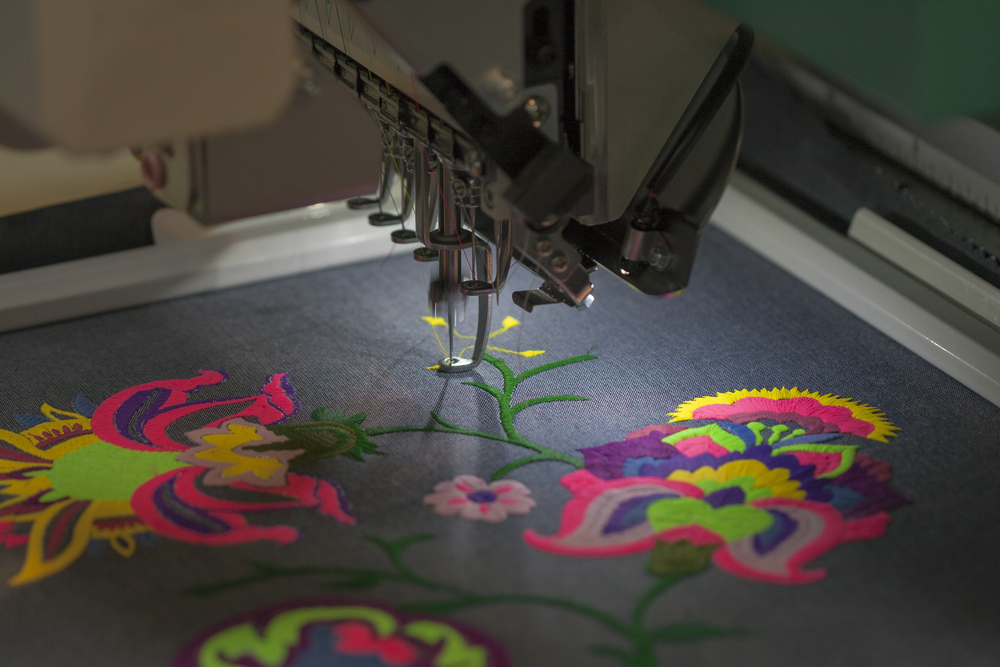Mastering the Needlework Digitizing Process: Your Ultimate Overview
Embroidery digitizing is a precise craft that needs precision and experience to translate intricate designs into digital formats for machine embroidery. As artisans embark on this journey to master the embroidery digitizing procedure, a thorough understanding of the basics establishes the structure for quality.

Comprehending Needlework Digitizing Essentials
Needlework digitizing basics form the foundation upon which elaborate styles are equated right into machine-readable layouts for specific sewing. This initial step in the embroidery digitizing process is important for making certain that the last stitched item is a loyal depiction of the initial layout. Recognizing needlework digitizing essentials involves understanding essential ideas such as stitch types, stitch direction, density, underlay, and pull compensation.
Stitch types play a crucial function in determining the aesthetic and textural end result of the stitched layout. By picking the ideal stitch type, whether it be satin, fill, or running stitch, digitizers can achieve the desired effect and enhance the overall quality of the embroidery. In addition, sew instructions influences the flow and dimension of the design, while density identifies the spacing and coverage of the stitches.
Furthermore, underlay stitching offers stability to the design by securing the textile and protecting against distortion throughout the needlework process. Pull compensation is another important consideration to neutralize the natural tendency of fabric to agreement when sewn. Understanding these needlework digitizing essentials is basic for creating professional-quality stitched items.
Choosing the Right Digitizing Software Program
Choosing the appropriate digitizing software is an essential choice that substantially impacts the effectiveness and high quality of the needlework digitizing process. Digitizing for Embroidery. When selecting the right digitizing software application, it is important to think about factors such as the intricacy of layouts you plan to create, the user-friendliness of the software program, the level of client assistance used, and the compatibility with your needlework equipment
There are different digitizing software choices offered in the market, varying from standard programs for newbies to innovative software for professional digitizers. Some popular choices include Wilcom EmbroideryStudio, Hatch Embroidery Software, and PulseID. These software packages offer a wide variety of tools and attributes to aid you develop detailed layouts with convenience.
Prior to choosing, it is a good idea to check out the different software options via cost-free tests or demonstrations to figure out which one finest suits your needs. In addition, reviewing testimonials and looking for suggestions from skilled digitizers can offer important insights into the toughness and weak points of each software (Digitizing for Embroidery). By meticulously evaluating your needs and contrasting the functions of different digitizing software, you can make an enlightened option that enhances your needlework digitizing workflow
Digitizing Devices and Methods

Optimizing Style Settings for Embroidery
Grasping the have a peek here ins and outs of style setups is essential in accomplishing ideal cause the embroidery read the full info here digitizing process, structure upon the structure laid by recognizing digitizing devices and methods. When enhancing design settings for needlework, it is necessary to consider variables such as stitch kind, thickness, rug, pull compensation, and enrollment. Sew kind option affects the general look of the design, with options like satin, fill, and running stitches offering different appearances and results. Thickness refers to the spacing and thickness of stitches, influencing the layout's insurance coverage and resilience. Appropriate rug stitching gives security and avoids fabric distortion, specifically for complicated designs or on elastic materials. Draw payment adjusts for textile stretch during stitching, making sure accurate style replication. Enrollment setups straighten various components of the style accurately, keeping total layout honesty. By fine-tuning these layout setups, embroiderers can enhance the top quality and precision of their stitched creations.

Troubleshooting Common Digitizing Issues
When running into typical digitizing concerns during the needlework procedure, it is necessary to recognize the source and implement efficient remedies quickly. One typical trouble is stitch density problems, where stitches might be too dense, creating the fabric to pucker, or also thin, resulting in spaces in the layout. Adjusting the stitch density setups in the digitizing software can this website help solve this concern.
Another regular obstacle is thread breaks during the embroidery process. This can happen as a result of various reasons such as incorrect tension setups, plain needles, or making use of low-grade thread. Guaranteeing appropriate upkeep of the needlework maker, consisting of normal needle adjustments and tension modifications, can lessen the incident of string breaks.
In addition, layout enrollment mistakes can cause misaligned elements within the embroidery design. Checking the design alignment in the digitizing software application and making required modifications before stitching can assist in preventing this concern. By resolving these usual digitizing concerns without delay and properly, you can ensure a smoother needlework procedure and high-grade finished products.
Conclusion
Finally, understanding the embroidery digitizing procedure calls for a strong understanding of the fundamentals, the best choice of software, and expertise of devices and methods. Optimizing layout setups and fixing common digitizing concerns are critical actions in ensuring top notch embroidery results. By adhering to these actions vigilantly, one can achieve accuracy and effectiveness in the digitizing procedure.